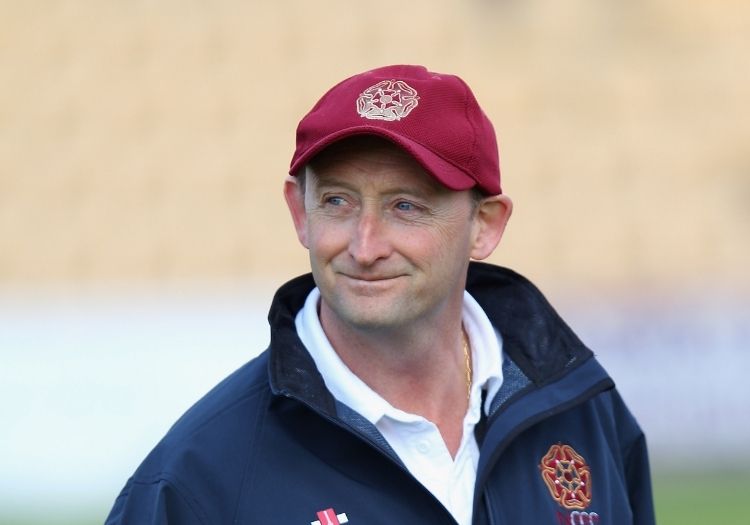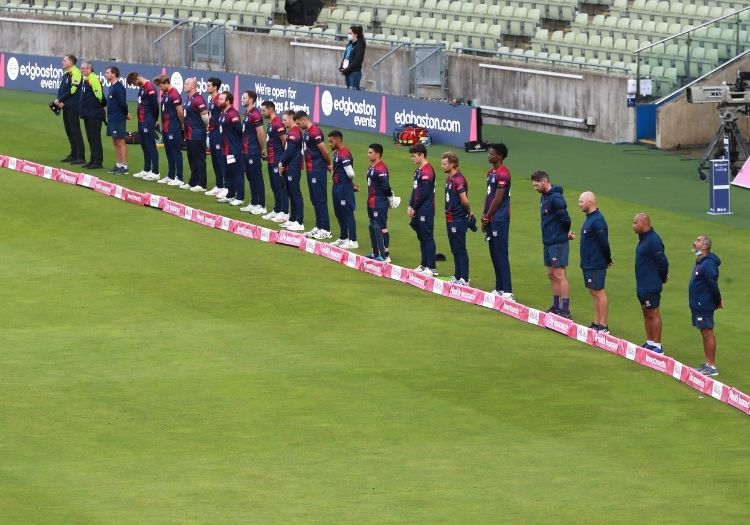PAUL EDWARDS: Wantage Road has been enriched in the manner of all grounds that value their inheritance. For memories of David Capel and many others are among the treasures we pass on to the next generations

“Who was David Capel anyway?”
Please note the speech marks. The question is not mine. I was imagining a warm morning some thirty years hence when, as I fervently hope, first-class cricket is still being played at Wantage Road. A young seamer is called into the attack and it is announced over the public address that he will bowl from the David Capel End. It is then that the lad asks his skipper the question that opens this piece.
Let us hope the stories pour out. Let us hope the young cricketer is told about the all-round ability, the enthusiasm, the heart that was for ever on Capel’s sleeve. Let us hope he is pointed to Matthew Engel’s deeply affectionate obituary that appeared in The Guardian following Capel’s dreadfully early death from a brain tumour last September. There he will find this:
“He remained all his life one of the best-loved figures in English cricket. Spectators enjoyed his commitment: he could get theatrically cross in adversity. His colleagues appreciated his skills, integrity and good nature.
“Above all, he was a local hero: he spent his whole career with Northamptonshire, a team that imports most of their players. But he was truly their own, and when he made his Test debut in 1987 he was the first player born in the county to be capped in 77 years.”
But none of this could happen had not Northamptonshire possessed the sense and sensitivity to name an end of their ground after one their most devoted cricketers. It was, of course, a very big call. Honouring a player or official in this way is not something you can withdraw after a few summers. But then in the cases of David Capel, Brian Statham or James Anderson you’d never want to do that.
So there we have it. Wantage Road has been enriched in the manner of all grounds that value their inheritance. For memories of Capel and many others are among the treasures we pass on to the next generations. It all links to the oft-used but very powerful line that nobody dies while others remember them. (And it also connects to the piece I wrote a few weeks ago about the value of giving each end at every ground a name that is distinctive rather than generic.)

Northamptonshire's players pay their respects to David Capel a day after his passing last year
Many clubs already name their ends, buildings or rooms after long-serving players or officials and it would be pleasant if more did so. To walk round many county grounds is to be taught the gentlest of history lessons and it should be the same with clubs. Every hut, function room and scoreboard should carry the name and therefore the memory of someone associated with it. (But on a lighter and also darker note I recently heard of a place that was thinking of naming their largest vodka optic after a member and attaching the simple legend: “Emptied Every Day.”)
There has been another somewhat melancholy reason to remember a great cricketer recently, albeit that his passing caused one of the finest photographs of the year to be taken. Shortly before Mike Hendrick’s death his former Derbyshire and England colleague, Geoff Miller, organised a reunion of his former England colleagues. John Lever, Derek Randall, Geoff Boycott, Ian Botham, Bob Taylor and John Emburey all turned up.
Looking at that photograph now arouses many emotions but sadness is among the least of them. There is too much fun, too much joyful relish shining out from the simple image of eight blokes sitting round a table, sharing a drink or two and no doubt remembering the games in which they had played. I hope one or two incidents were suitably embellished.
Between them, those eight cricketers played 463 Test Matches but I think they share a wider communion, one unconstrained by mere ability. Not for the first time, I recall one of Frank Mansell’s Cotswold Ballads “The Old Cricketer” in which a poet who turned out for the Gloucestershire village of Sheepscombe imagines a reunion of local players, “recalling the glory they knew in their prime, all batsmen and bowlers of note, who terrified parishes.”
I’m writing this piece in the press box at Lord’s, early on the fifth morning of the Test match against India. By the time it appears the result of what has been a great game will be known but that is the least of my current concerns. On the outfield before me England’s cricketers are playing a bit of football while the Indian squad are in a massive huddle.
It seems at least probable that those two sets of players will never again be as close as they will be over the six weeks of this marvellous series. Almost inevitably there will be changes for each country’s next adventure. Yet here they are, brought together in the inescapable present, playing their diverse roles in a match that each of them will have different reasons to recall in say, thirty years’ time.
This sad, yet beautiful photo got me yesterday, and today. Mike Hendrick died 10 days later and his teammates made sure they said goodbye. We read a lot about teams, how they're made, but they're not made, they happen, unforced, and never break up, just have time apart #hendo pic.twitter.com/4X1295mTY6
— Michael Caulfield MSc (@TheCaulfieldWay) July 28, 2021
But now let us go back to another Test match, the one played against Australia at Trent Bridge in 1977. England will win the game by seven wickets and in their side will be Mike Hendrick and four more of those who will gather to chew the fat some 44 years later. Their preparation will probably have been less intense and their back-room staff will certainly less numerous than is the case with the present-day England team. Yet those who played in that Nottingham game will have little trouble recalling its dramatic details.
To wrap oneself in nostalgia is to betray history. Hendrick, Capel and the others had their bad days, their sackings, their none-for-plenties. Cricket was no less hard a game in say, the 1950s or the 1970s, although I suspect it was hard in different ways. But if we cordon off the game’s past we lose touch with the wisdom – and errors – of other ages.
That is why the naming of ends, the taking of photographs and the conducting of interviews all matter very much. And these people are all about us if only we would look for them. There is a famous William Faulkner line that I have used so often I swear my laptop could tap it out for itself. It comes from his novel Requiem for a Nun: "The past is never dead. It's not even past."
And so it is that for a moment or two the Press Box at Lord’s disappears. In its place is the sight of David Capel striding out to bat at Wantage Road. Northamptonshire are in trouble and he has decided only he can rescue them. Then there is a Trent Bridge Test. A huge figure is rumbling in from the Radcliffe Road End, his shirt billowing and his shoulders dipping like a cutter in choppy seas. It is Mike Hendrick and on his day he is the best fast-medium bowler in England.